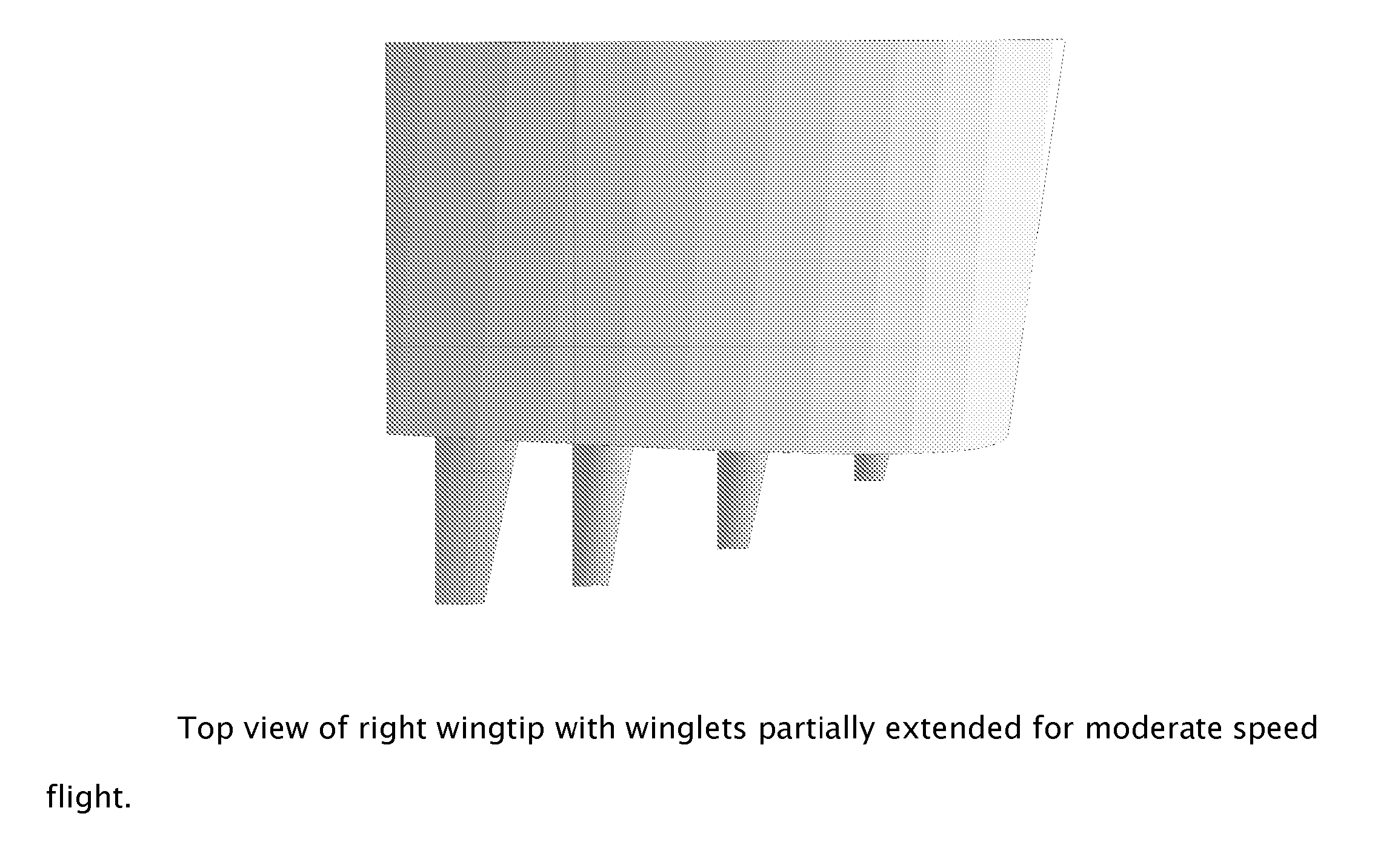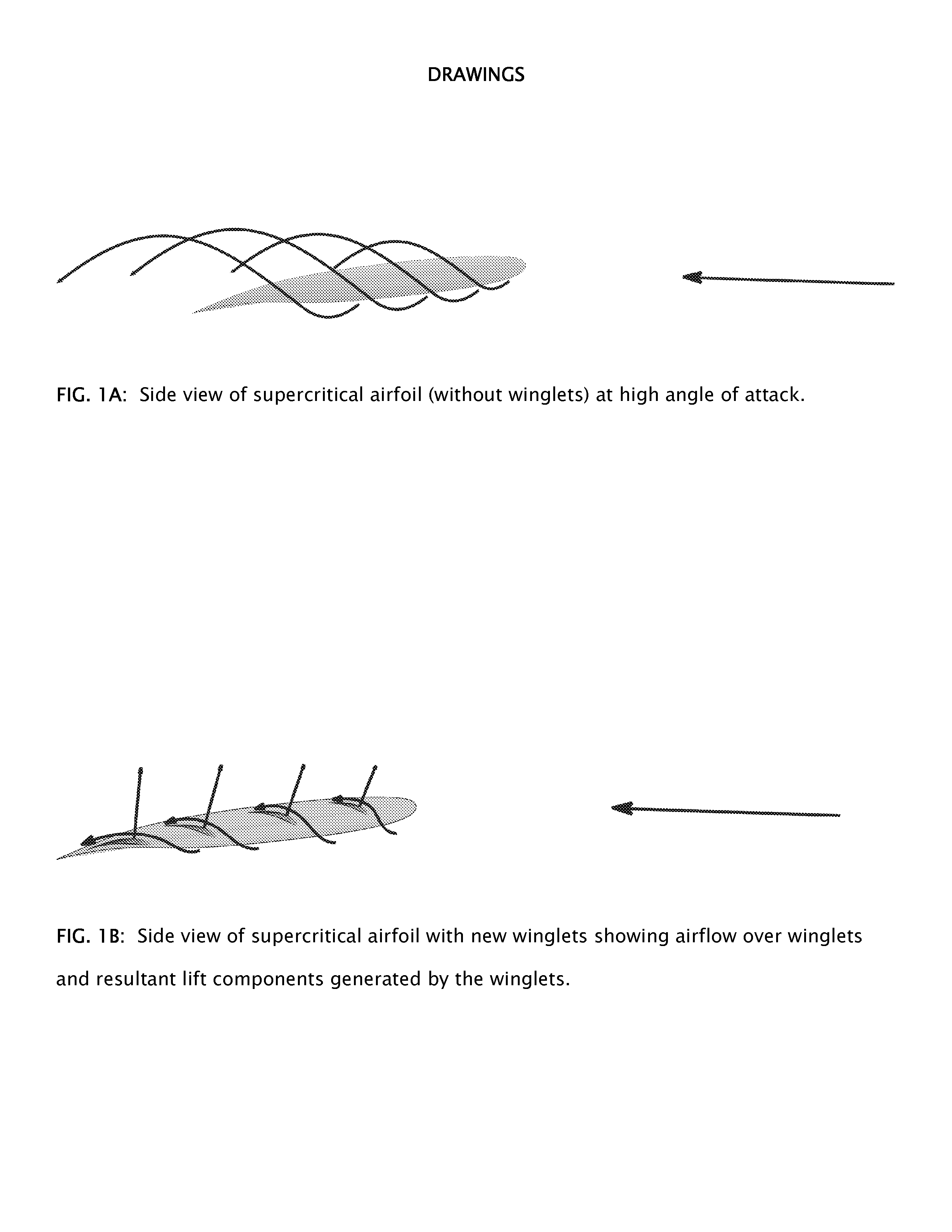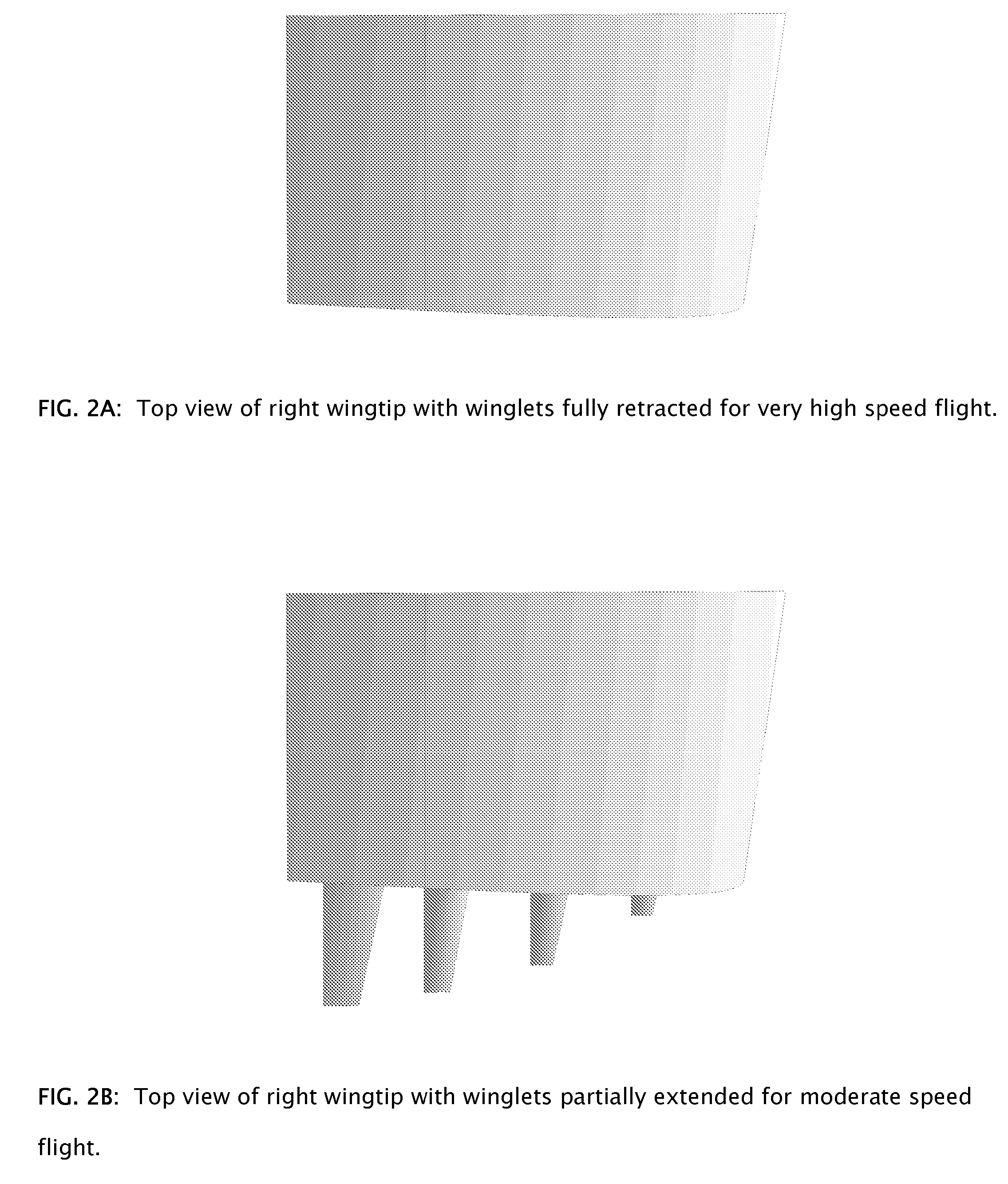Retractable multiple winglet
- Summary
- Abstract
- Description
- Claims
- Application Information
AI Technical Summary
Benefits of technology
Problems solved by technology
Method used
Image
Examples
Embodiment Construction
[0011] As illustrated in FIG. 1A, an airfoil that produces lift will have some high pressure air from the bottom of the wing escaping around the wingtip to the top of the wing. This creates a strong upwash immediately outboard of the wingtip as well as a powerful vortex at the trailing edge of the wingtip. FIG. 1B shows what happens when airfoils are placed in this upwash. Because the upwash is causing the local airflow to travel at an upward angle, the airfoils must be tilted forward (leading edge down) to meet the airflow at the proper angle. This will cause the resultant lift vector of the airfoils to be tilted forward and slightly into the direction of the relative wind (as illustrated). Not only will this create a lift component that will add to the overall lift of the wing, but it will also create a thrust component that will reduce the overall drag. This increase in lift and reduction in drag will significantly improve the lift to drag ratio at high angles of attack. In accor...
PUM
 Login to View More
Login to View More Abstract
Description
Claims
Application Information
 Login to View More
Login to View More - R&D
- Intellectual Property
- Life Sciences
- Materials
- Tech Scout
- Unparalleled Data Quality
- Higher Quality Content
- 60% Fewer Hallucinations
Browse by: Latest US Patents, China's latest patents, Technical Efficacy Thesaurus, Application Domain, Technology Topic, Popular Technical Reports.
© 2025 PatSnap. All rights reserved.Legal|Privacy policy|Modern Slavery Act Transparency Statement|Sitemap|About US| Contact US: help@patsnap.com



